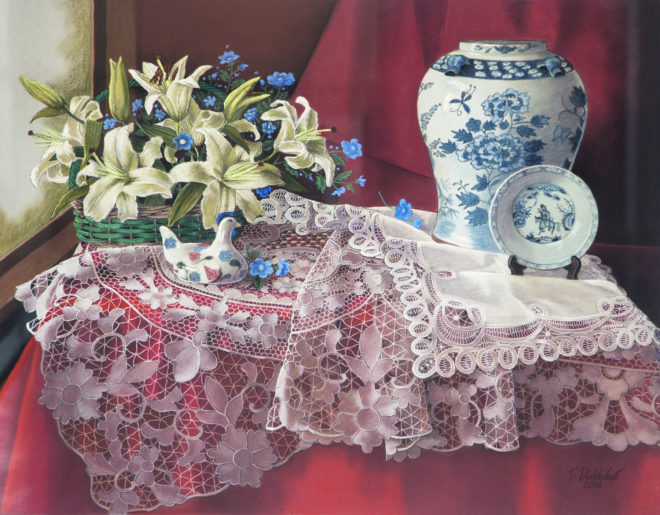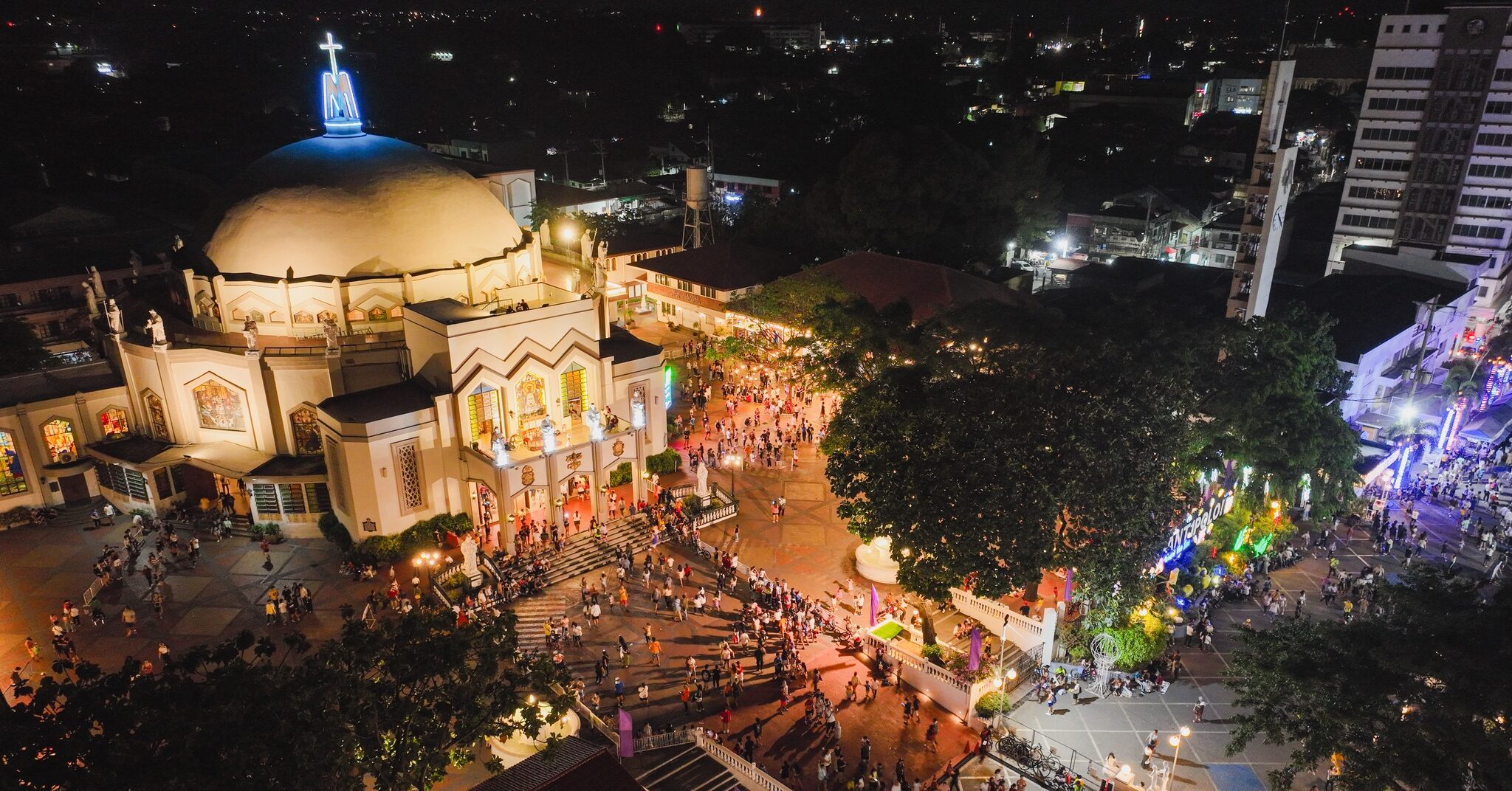
Portraiture and still-life paintings are Tessie Sarmiento-Duldulao’s forte. The first challenges the artist to capture the sitter’s character and likeness; the second, to make an arrangement of inanimate objects come to seeming life. Both possess a common quality: a sense of solitude and the intense gaze of the artist.
While Tessie’s portraiture is essentially a matter of commission, her still lifes are a matter of demand: meaning, they have become so desirable among her avid collectors.
Indeed, they are instantly recognizable by the trademark presence of the local lacey fabric called calado, a decorative needlework with open weblike patterns. This ornamental embroidery defines Tessie’s still lifes, which are all a marvel of balance and harmony.
The placement of objects on a table is actually Tessie’s first step in composing a painting. Extremely fond of flowers, native baskets and Oriental pottery, she has pride of place in each of these objects, reveling in the formality of their shapes, the sensuousness of their texture and surface, and their mellow infusion of colors.
Delicate richness
Once Tessie has finally decided on their arrangement, it becomes the final design of her painting. What holds them together is the elegant draping and flowing of the calado, through which open nettings the viewer catches a glimpse of a contrasting monochromatic fabric underneath, or even the grains of a wooden table.
Tessie’s handling of the subtle shadows and the gentle modulations of surface tone is magical and masterly, bringing to the fore the delicate richness of calado patterns and designs. A suggestion of an open window brings in the light coming from a single source. Moreover, one can almost feel the gentle caress of a breeze rustling through the quiet interior.
Pastel perfection
Amazingly the artist’s medium of choice is not oil or acrylic but pastel sticks, which, when sharpened to a pencil-point, becomes the perfect instrument to delineate the complex weaving and interstices of the calado.
It is no exaggeration to say that these works often elicit gasps of delight and pleasure from her collectors and, surely, immense admiration for her patience and laborious craftsmanship.
Instantly two distinguishing qualities define the art of Tessie Duldulao: restraint formality in the presence of effervescence, and precision in the placement of objects.
Undoubtedly the artist has mastered, both by instinct and feeling and by training of the eyes, the exact correlation of distance and proximity between and among her objects.
Her sanctuary is her red brick-walled studio built separately from the house proper. It is here, in welcome serenity and privacy, where the artist communes with the muses, not in any romanticized notion of inspiration, but in sheer dedicated and disciplined work. When she closes behind her a large antique wooden door distinguished by a carved bas-relief of a saintly figure, Tessie Sarmiento-Duldulao is at peace with the world and herself, as she finds the real meaning and value of her vocation as an artist.
—CONTRIBUTED
“Tessie Duldulao: Master of Still Life,” Sept. 14-25 at the Art Center, 4/F SM Megamall.












































